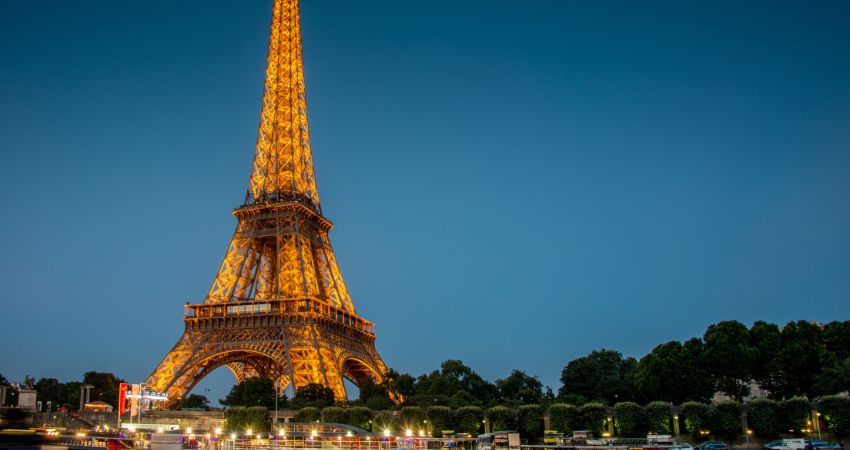The Eifell Tower
Apart from the Louvre, the most distinct cultural landmark of the city of Paris has to be the Eiffel Tower also known as the La Tour. Made of 2,500,000 rivets and 12,000 pieces of metal, Eiffel Tower exudes a feeling of eternalness thanks to its gigantic look and a towering presence. Your trip to Paris is not complete without visiting Eiffel Tower.
This mammoth structure has very interesting tales to it where at one point it almost became scrap metal after its concession expired in the year 1909. However, it would have an unlikely saviour in the form of science where it was used a radio antenna. Since then it has become like a symbol for Parisians albeit there were some people like Guy de Maupassant and Alexander Dumas who had ridiculed the 1063-foot iconic monument.
Its cultural landmark status can be attested to the mere mention of La Tour and Paris in the same sentence. Most people will tell you that Parisian nights are not complete without a stroll around La Tour. The beauty of this structure is accentuated at nights thanks to a forest of astounding lights that highlight every girder in it. Stride up as far as the third floor (nearly 1700 steps) and then take the elevator if you want to take a close peek at the structure.
Noteworthy recent enhancements include renovation of the first floor, which brought about the addition of a transparent floor just above the esplanade and a pair of glass-facade pavilions that stay close to the side of the tower, housing educational areas. Addition of a mini turbine plant, eco-friendly solar panels and turbine windmills ensure the carbon footprint is kept to a minimum.
For a visit to La Tour, you should book tickets online and make reservations if you want a guided tour.
The Eiffel Tower is the perfect spot for a photography session. Paris photography sessions depend on the type of your celebration.
Notre Dame Cathedral
Paris is a cultural hub with several monuments that attest to the cultural splendour. More than 800 years old and situated on Ile de Cite, a small island between the River Seine, is The Notre Dame cathedral. Regarded as one of the Parisian gems and a great Catholic treasure, the construction of this cathedral took as long as 200 years only to be in 1345 during the reign of King Louis VII.
As with any notable monuments that is centuries old, this cathedral has its own share of joyful moments and tragedy. The most notable moment was the coronation of Henry VI of England. After many years of being in a state of disrepair, it came close to getting demolished but was later saved by Napoleon Bonaparte who was eventually crowned right here in 1804.
Jean de Arc or Joan of Ark’s story was intertwined with that of the Notre Dame cathedral. Known for her bravery to pursue freedom when she rallied the French citizenry against the tyranny of the English, she met a very sad end at the hands of the Burundians who sold off to the English. The woman with paragon of bravery and tact was later beatified in the Notre Dame cathedral by Pope Pius X in 1909.
The cathedral even houses a distinct artefact with great history behind it- the famous ring bell which has been redesigned to ring on its own. Stride up 140 stairs to take a look at this artefact and you will be surprised to behold a great view of Paris. A collection of other distinct artefacts such as the 17th century organ, plans, paintings, engravings and drawings stand for the Paris of the old and say a lot about how this bristling city came into being.
Did you know?
- 130 metres long, 48 metres wide and 35 metres high, this cathedral has rose windows with 10m diameter and pillars that are 5 metres wide.
- To date, many Catholics use it for their daily mass. Access is open and free of charge.
Pictures: http://www.jleal.eu










